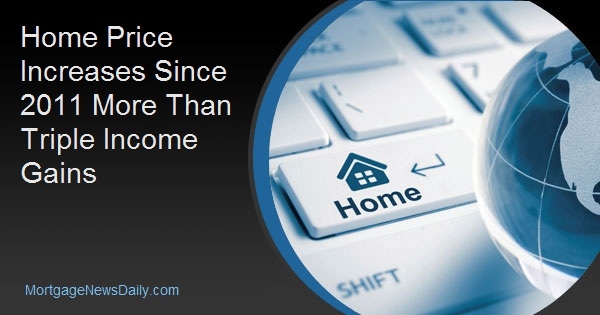While home price increases softened slightly in the fourth quarter of last year, the National Association of Realtors® (NAR) said, an uptick in existing home sales further exhausted available inventories. NAR's quarterly metropolitan area housing report puts the national median existing single-family home price at $247,800 at the end of 2017, up 5.3 percent from the fourth quarter of 2016. The year-over-year gain in the third quarter of 2017 was a slightly higher 5.6 percent.
Single-family home prices grew in 162 or 92 percent of the 177 metropolitan statistical areas (MSAs) tracked by NAR. In 26 of those areas, or 16 percent, the gains were in the double digits compared to in 11 percent the prior quarter. Eighteen MSAs set new price peaks, bringing the number with median prices at record highs to 114 or 64 percent.
Lawrence Yun, NAR chief economist, says, "A majority of the country saw an upswing in buyer interest at the end of last year, which ultimately ended up putting even more strain on inventory levels and prices. Remarkably, home prices have risen a cumulative 48 percent since 2011, yet during this same timeframe, incomes are up only 15 percent. In the West region, where very healthy labor markets are driving demand, the gap is even wider."
“These consistent, multi-year price gains have certainly been great news for homeowners, and especially for those who were at one time in a negative equity situation; however, the shortage of new homes being built over the past decade is really burdening local markets and making homebuying less affordable,” Yun said.
Sales of existing homes, both single family and condos, rose to a seasonally adjusted annual rate of 5.62 million in the fourth quarter, 4.3 percent growth quarter-over quarter and 1.3 percent more than in the fourth quarter of 2016.
The average supply of available homes over the course of the fourth quarter was 3.5 months compared to 4.2 months in the same quarter of 2016. There were 1.48 million existing homes in that inventory, 10.3 percent fewer than a year earlier.
Despite an increase in the national median income to $74,492, affordability still edged down as both home prices and interest rates increased. NAR estimates a family would need an income of $55,585 to purchase a home at the national median price with a 5 percent down payment. An income of $46,808 would be needed with 20 percent down.
All but one of the five most expensive housing markets were in California; San Jose with a median price of $ $1,270,000; the San Francisco Bay area at $920,000; Anaheim-Santa Ana, $785,000; urban Honolulu, $760,600; and San Diego, $610,000. The five lowest cost were Cumberland, Maryland, $84,600; Youngstown, Ohio $90,200; Decatur, Illinois, $100,000; Binghamton, New York, $108,900; and Wichita Falls, Texas, $110,400.
The median condo price was $237,500, a 7.0 percent increase. Eighty-four percent of the 61 metro areas where condos are tracked showed gains in their median condo price from a year ago.
Total existing-home sales jumped 10.1 in the Northeast compared to the third quarter, but the region was the only one to experience a year-over-year decline; sales were down 0.4 percent. The median existing single-family home price gained 4.2 percent annually, to $268,100.
Existing sales in the Midwest rose 6.0 percent from the third quarter and were up 2.3 percent from a year earlier. The median existing single-family home price was $193,800, a 7.2 percent change.
Sales in the South increased 3.8 percent and 1.8 percent from the two earlier periods. The median price was up 5.0 percent to $221,600.
The annualized 1.23 million existing home sales in the West was unchanged from the previous quarter and up only 0.3 percent year-over-year. The median price of an existing single-family home increased 7.2 percent on an annual basis to $374,400.
"While tight supply is expected to keep home prices on an upward trajectory in most metro areas in 2018, both the uptick in mortgage rates and the impact of the new tax law on some high-cost markets could cause price growth to moderate nationally," Yun said.







